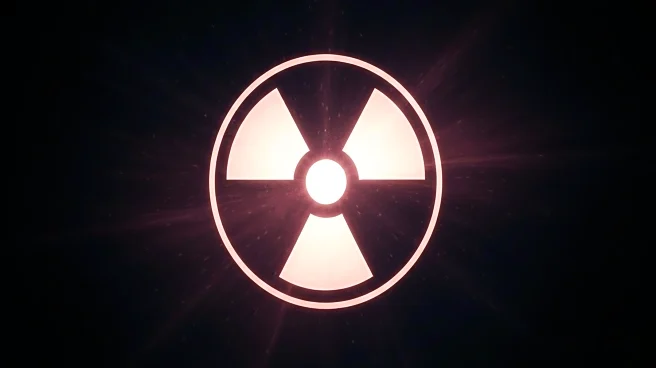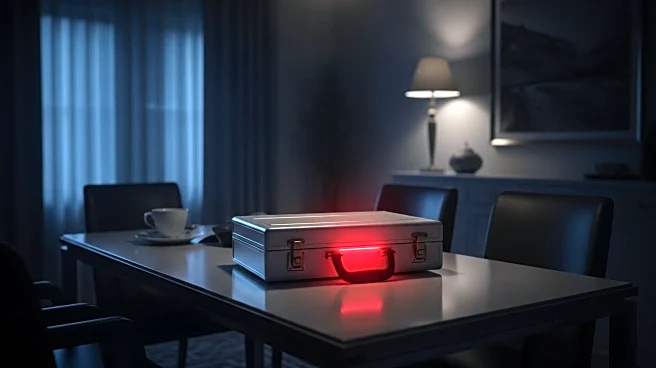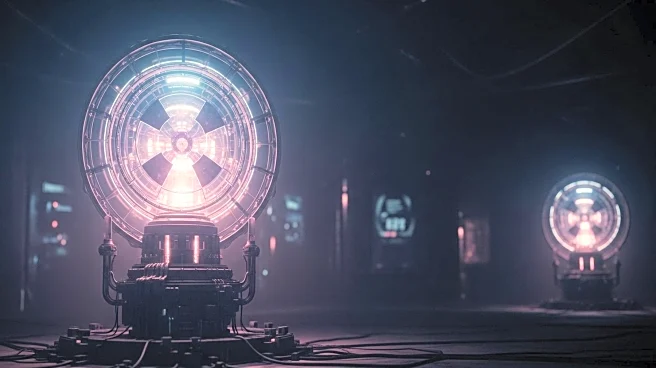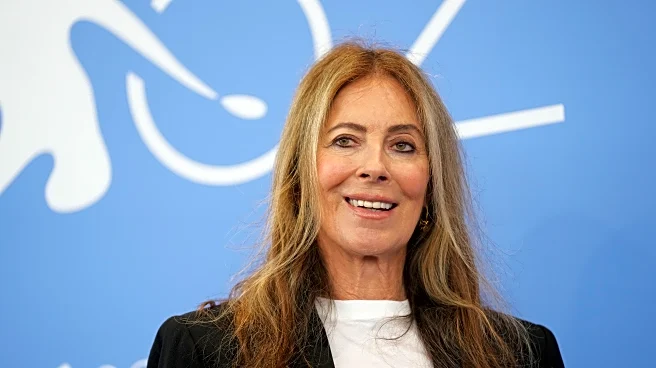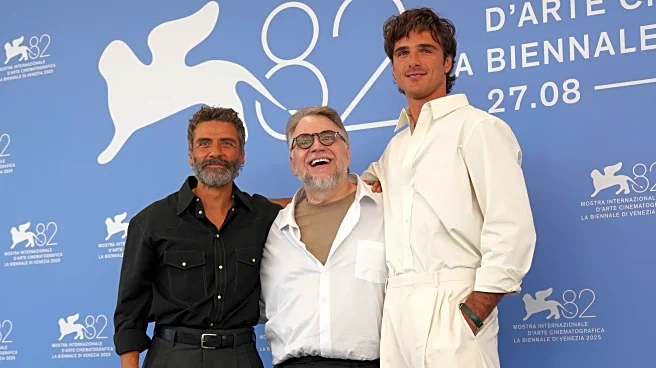What's Happening?
Kathryn Bigelow's latest film, 'A House of Dynamite,' premiered at the Venice Film Festival, presenting a gripping narrative centered around a nuclear threat. The film, starring Idris Elba and Rebecca Ferguson, unfolds in three acts, each offering a different perspective on a missile launched at the United States. The story begins in the White House Situation Room, transitions to NORAD, and concludes with the President's viewpoint. The film's urgency and realism highlight the potential for nuclear conflict, drawing parallels to historical tensions during the Cold War. Bigelow, known for her work on 'The Hurt Locker' and 'Zero Dark Thirty,' aims to deliver a wake-up call about the dangers of nuclear normalization.
Why It's Important?
The film's portrayal of a nuclear threat underscores the ongoing global tensions and the potential consequences of miscommunication or miscalculation in international relations. By depicting a plausible scenario of nuclear conflict, 'A House of Dynamite' serves as a reminder of the fragile state of global peace and the importance of diplomatic efforts to prevent such crises. The film's release comes at a time when geopolitical tensions are high, making its message particularly relevant. It challenges viewers to consider the implications of nuclear warfare and the responsibilities of world leaders in maintaining peace.
What's Next?
Following its premiere, 'A House of Dynamite' is set for a global theatrical release and streaming on Netflix. The film is likely to spark discussions on nuclear policy and international security, potentially influencing public opinion and policy debates. As audiences engage with the film's narrative, it may prompt calls for renewed diplomatic efforts and arms control measures. The film's impact could extend beyond entertainment, contributing to broader conversations about global security and the role of cinema in addressing critical issues.
Beyond the Headlines
The film's exploration of nuclear threat raises ethical questions about the portrayal of such scenarios in media. It challenges filmmakers and audiences to consider the impact of depicting real-world dangers and the responsibility of art in shaping public perception. Additionally, the film's narrative structure, with its focus on different perspectives, offers a unique approach to storytelling that may influence future cinematic techniques.



